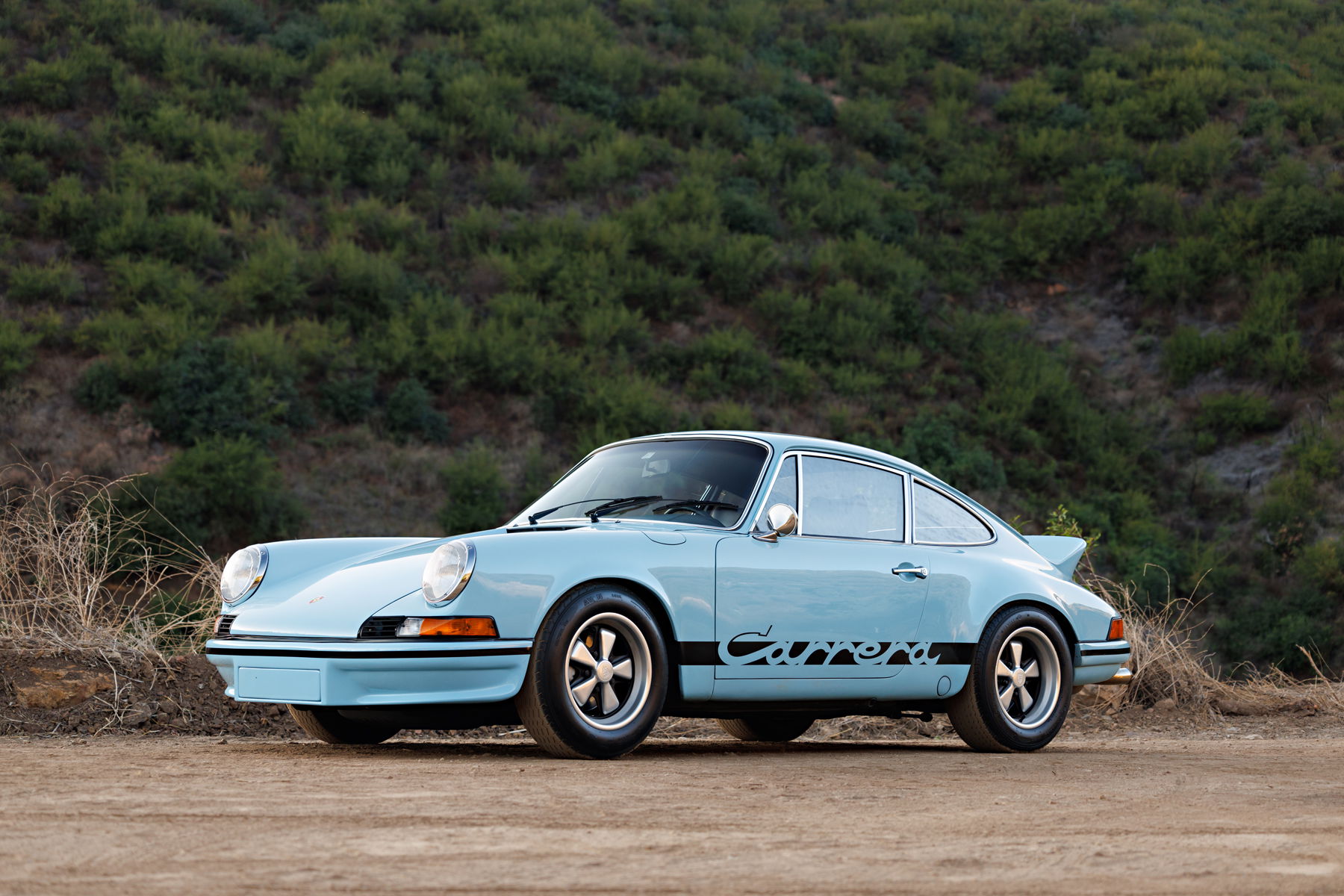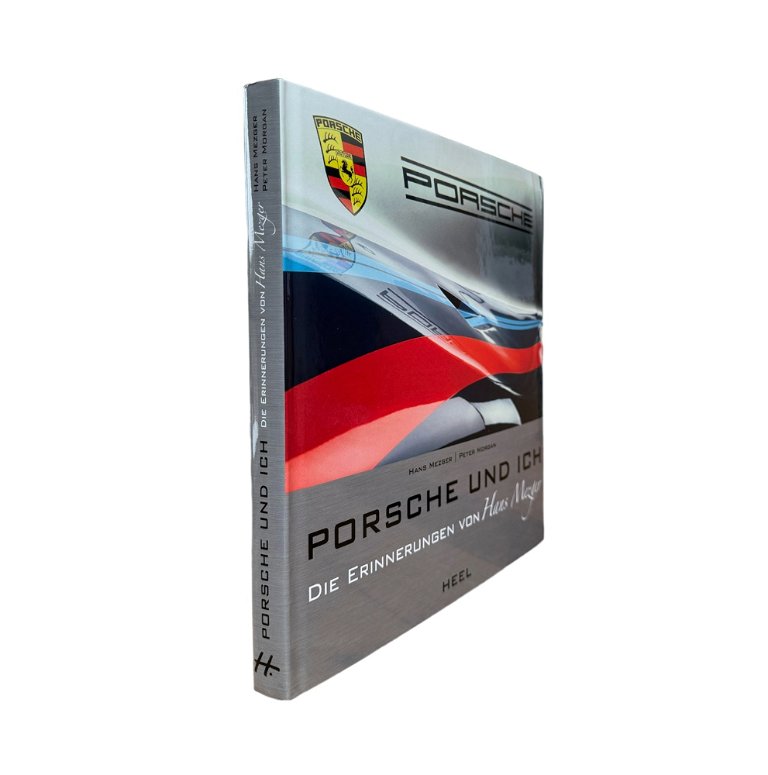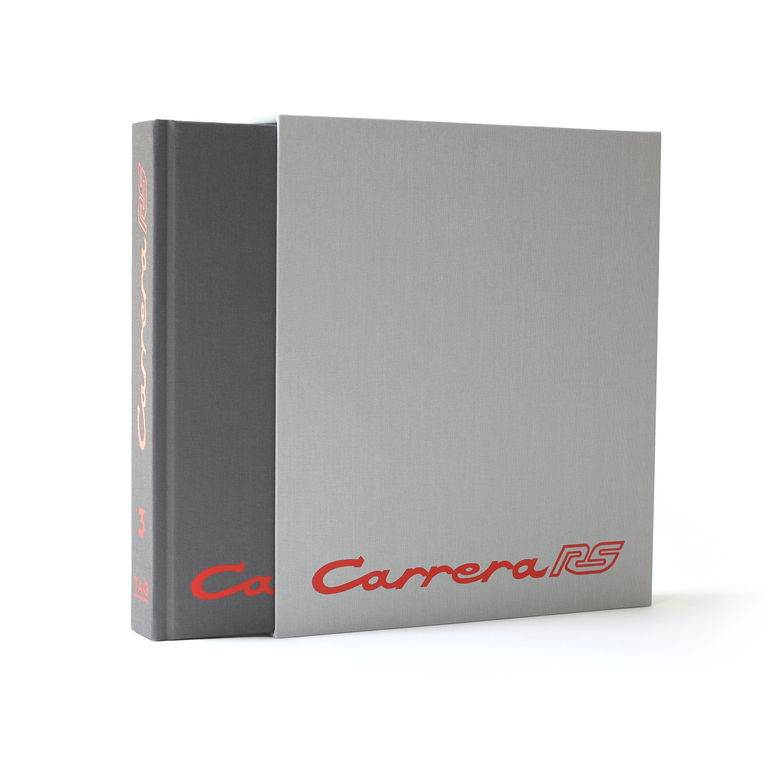The Carrera RS of 1973 was conceived as a pure homologation special, as Porsche needed to build 500 road-going examples to qualify the new car for FIA Group 4 GT racing. The RS was a substantially modified version of the already potent 2.4-liter 911 S. By increasing displacement to 2.7 liters, introducing various weight-saving measures, stiffening the suspension, and fitting aerodynamic aids, Porsche created an unrivaled sports car. In total, just 1,580 examples of the 2.7 RS were built, of which a mere 200 were completed in race-oriented M471 Sport or Lightweight specification.
Designed primarily as a racing car that still retained its everyday utility, these rare M471 models were initially constructed using a lightweight body shell with thin Glaverbel glass, fiberglass bumpers, and an aluminum-framed fiberglass engine lid molded into the famous “ducktail” spoiler. In order to save weight wherever possible, many of the 911’s standard features were discarded entirely or simply replaced with lighter and simpler items.
Whereas the M472 Touring models were often fully trimmed and highly optioned, the M471 Lightweights featured a business-like cockpit, spartanly furnished with cloth-covered Recaro bucket seats, simplified door panels, and thin felt carpeting. In the most extreme instances, cars were even delivered without a glove box door, clock, or sun visors.
A definitive dual-purpose sports car, striking an ideal balance between the thoroughbred 2.8 RSR and the well-appointed M472 Touring models, Carrera 2.7 RS Lightweights were generally sold to gentlemen drivers who used them to great effect in circuit racing, rallies, and hill climbs.
This first-series M471 Lightweight, chassis 9113600269, was built in late 1972 and delivered new to the official Porsche importer in Sweden, Volkswagen Sverige, in Södertälje. It was finished in the legendary Porsche racing color of Gulf Blue, recalling the dominant 917s of the early 1970s. Only 18 Carrera RS 2.7s were finished in this stunning hue, and of those, just four were Lightweights. In addition to the M471 Lightweight package, this RS was optioned from new with a limited-slip differential and left and right headrests. The Lightweight was sold to its first owner in Sweden in March 1973, and according to documents on file, it was next sold to Swedish mechanic Bertill Karlsson in August 1974 following an accident, photos of which are on file. Karlsson reportedly purchased the car from an insurance company and repaired it after hours in the Porsche dealership where he worked, including replacing the car’s roof. In 1976, the RS was sold by Karlsson to fellow Swede Lars Sundman, who kept it until he sold it to an owner in the US in 1987.
The Porsche was then owned by several US-based collectors, including robotics pioneer and classic car collector Ron Green of Atlanta. In 2011, the RS was purchased by a private European collector and in 2012 it was sold by renowned specialists Maxted-Page Limited to a prominent UK-based Porsche collector. Invoices on file document over £15,000 in mechanical work and maintenance carried out by Maxted-Page from 2011–2020.
A report on file from Belgian RS 2.7 specialist Kobus Cantraine outlines this example’s history and notes that the chassis number located in the front trunk was scanned with magnetic resonance and found to be original. The report further states Cantraine’s opinion that the dashboard production number is “untouched and absolutely original, exactly how it has left the factory in 1972.” Cantraine also points out a unique feature of this RS – the fact that the car’s chassis number is also found stamped in the engine bay, a feature specific to Swedish-delivery cars.
The RS was acquired by the consignor via Mr. Cantraine in 2021, joining his impressive stable of the finest limited-production Porsches. With its well-documented history and rarity as a first-series Lightweight, this example is already an important, highly collectible sports car. One of just four Lightweights originally finished in Gulf Blue, this RS 2.7 is an ideally specified Porsche from one of the firm’s most glorious periods.
















